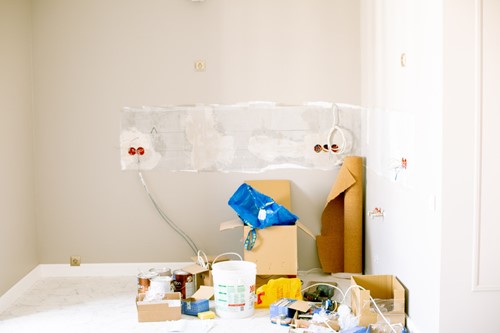
Basements with unfinished walls can make this part of a home an unpleasant and uncomfortable place to be. Wall finishes for basements offer a way to turn these areas into comfortable and functional spaces. When you have finished walls in your basement, you and your family can get more use out of this part of your home. Whether you plan to use it as a game room, home theater, workout room or something else, it’s important to understand what to do and what not to do when finishing basement walls. The following tips can help you learn more about this process.
Pull a Permit if Needed
Check your local rules on finishing basement walls in case you need to pull a permit. You might not need to if you’re sealing basement walls or painting them. However, you’ll likely need a permit if you need to construct new walls inside your concrete basement walls. You might also need a permit if you plan to add any plumbing or wiring in your walls. Pulling a permit if it’s needed is important to do, so that you don’t risk running into problems later on. For example, you might have trouble selling your home if you did this type of work without a permit when you should have pulled one.
Choose Construction Materials for Basements
When choosing materials for finishing basement walls, make sure you select ones that are specifically designed for use in this part of your home. These materials are typically resistant to rot and moisture, making them better options for basement environments. For example, you can use treated wood with concrete walls, or use drywall that’s made to be resistant to mildew and moisture. If your finished walls will have insulation, choose rigid foam board insulation rather than fiberglass batt insulation, which is vulnerable to moisture damage.
Avoid Finishing Walls in a Damp Basement
If your basement is damp or has moisture problems, you’ll need to correct this before finishing the walls. Depending on the problem, you might need to use a sealant on your walls or have a drain installed under the floor to prevent leaks. Once your basement is dry, you can work on finishing the walls.
Plan for Pipes and Wiring
What should you do if you plan to build new walls when pipes are in the way? The easiest solution is to leave the pipes where they are and build your new walls on the other side of them. While this reduces the amount of interior space you have in your basement, it’s a less costly and complex solution than having to reroute these pipes. If you’re going to need new wiring in your walls, have a licensed electrician handle this task.
About the Author

Julie Pieczonka
Hi- I am Julie Pieczonka and I would love to assist you. Whether you're in the research phase at the beginning of your real estate search or you know exactly what you're looking for, you'll benefit from having a real estate professional by your side. I would be honored to put my real estate experience to work for you.
I am a retired fitness education and health education teacher. I decided to satisfy a long-time goal of mine and become a Realtor. This continues my desire to serve others and am so fortunate to have had amazing success. I served as an Ohio & Indiana Realtor, was a member of the Ohio Association of Realtor's President's Club 2015, 2016 & 2017; and a member of the Cincinnati Area Board of Realtor's Circle of Excellence Club 2015, 2016 & 2017. Realtor of the Year for Sellstate Platinum Realty in 2020.
My husband and I (and our two golden retrievers) have become permanent Florida residents as I acted as a referral agent only in Ohio and Indiana from 2018 through the present.
I am actively practice my love for Real Estate here in the Sunshine State.
I absolutely enjoy assisting my clients in one of the biggest decisions they will make in their lives —that's buying and selling real estate.
Cordially-
Your Active Agent,
Julie
